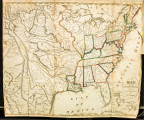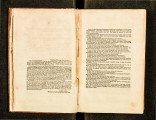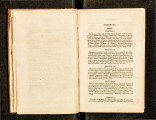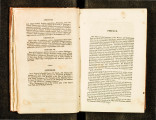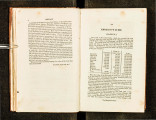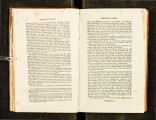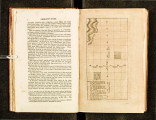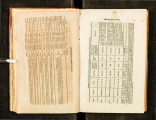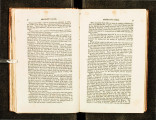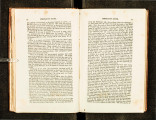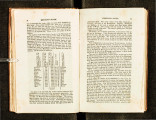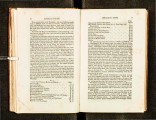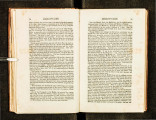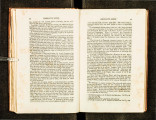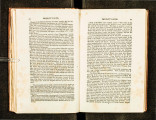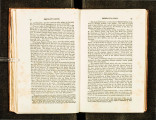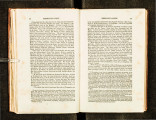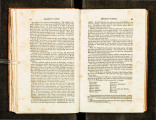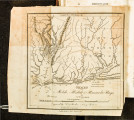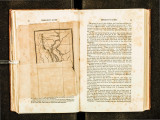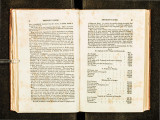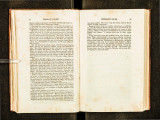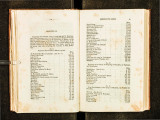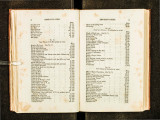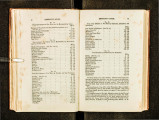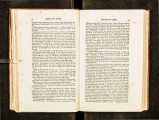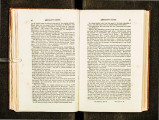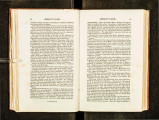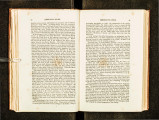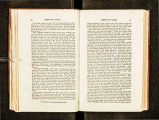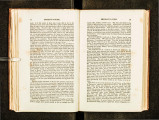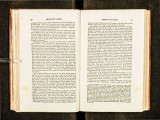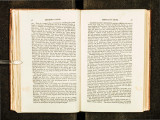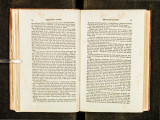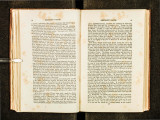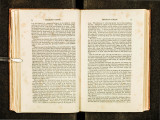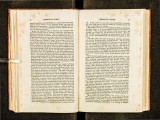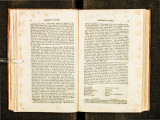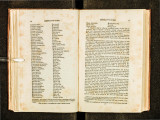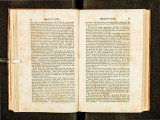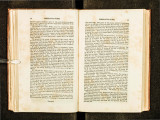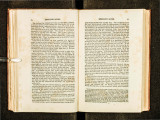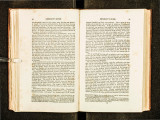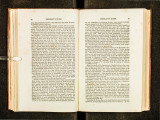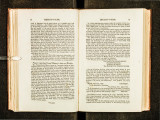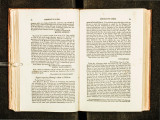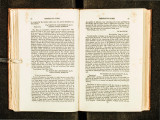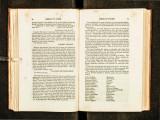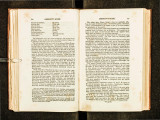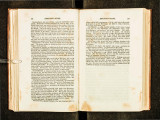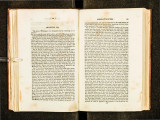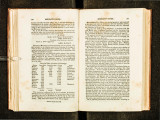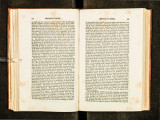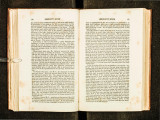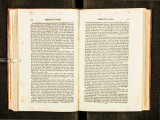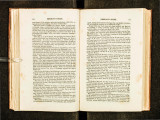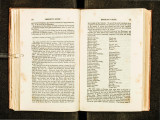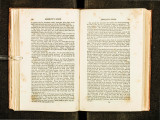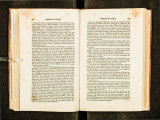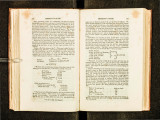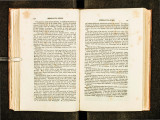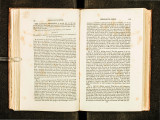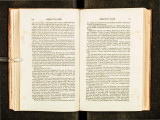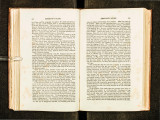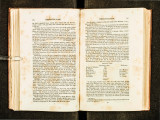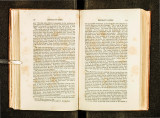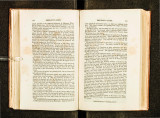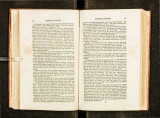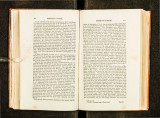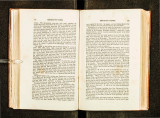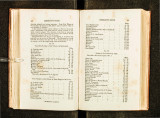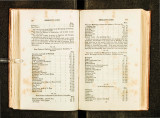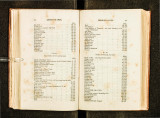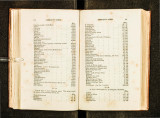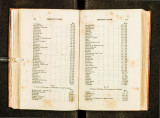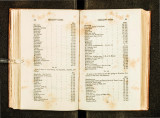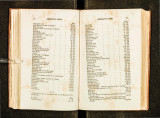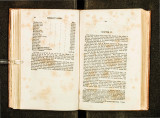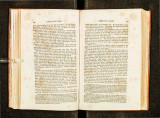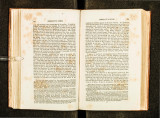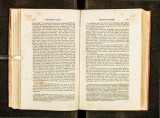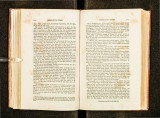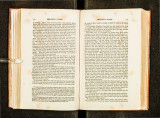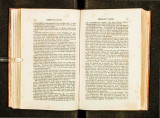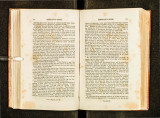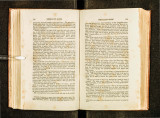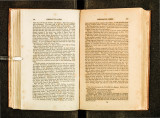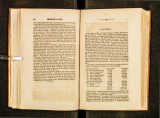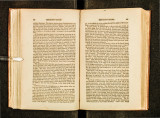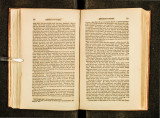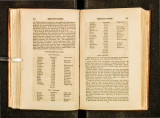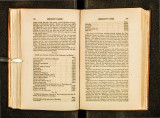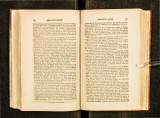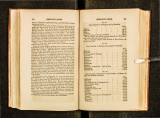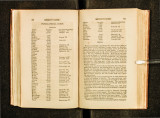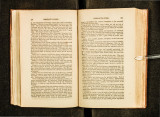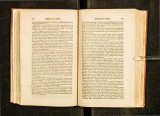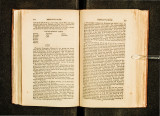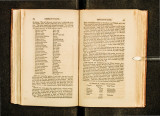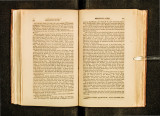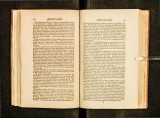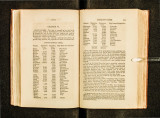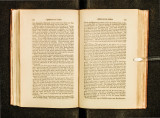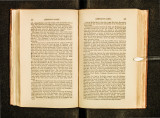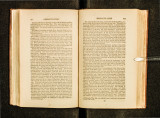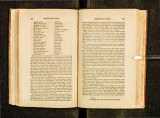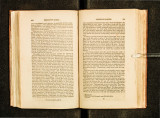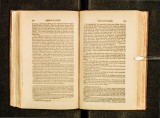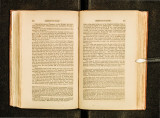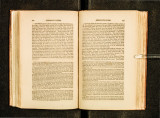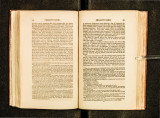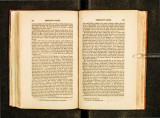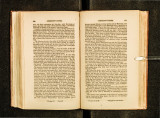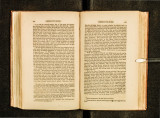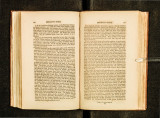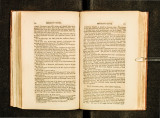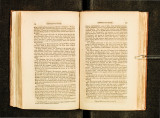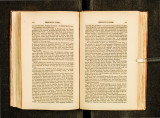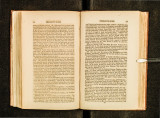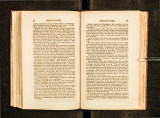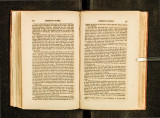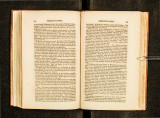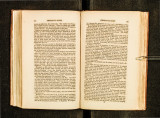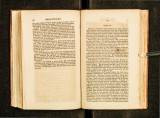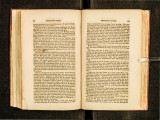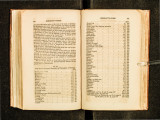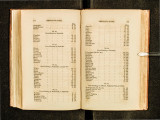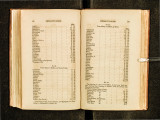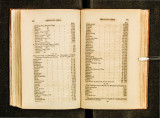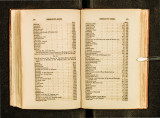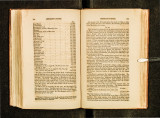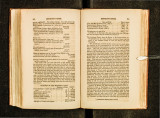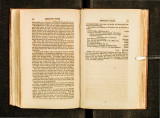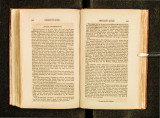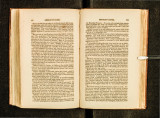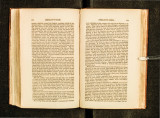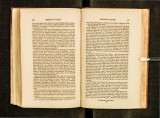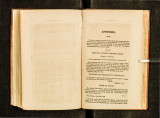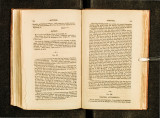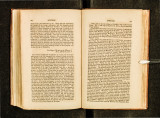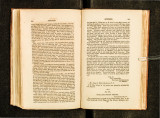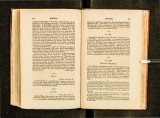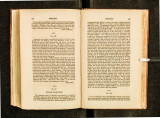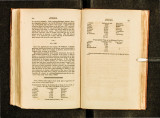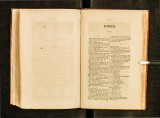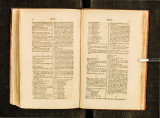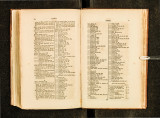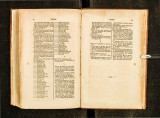| OCR Text |
Show 13'8 EMIGRANT'S GUIDE. of Red, Ouachitta, Arkansaw, White, Missi!'sippi, and St. Francis. the latter by the Osage, Missouri, Merrimack, and Mississippi nvers. The Red river mPrely touches the Mis!'ouri territory, and water. 50 ~.m~ll a part of its surface, that it can add but little to the top()graphical features of the country. The Ouachitta has been describ~J.~ The .rlrkansorQJ is, after the Missouri, the lorygest, aud j, some sea sonfl the largest branch of the Mississippi .t This c-rc>nt ~ iver rise2 above 41° no.rtl~ l~t. ~nd 33: west I on. from \V ashington city ; and enters the M1ssL s1pp1 at 34 north lat. and 14° west lon.; conseCJ~ fwtly flow:- through seven de~rees of latitude. and nim!teen (.,('Jon~ g1tude, or upwards of eleven hundred miles in a direct course and about one and a half that distance, foiJowin~ the stream. The A1~kans~ w greatly exceeds in length either th Mi5:-;issippi proper, or Ohio. ~hat part of Arkansaw .that tr~v.er ·es the Mi ~snuri territor' is skirted, m great part, by extens1ve pra1rres. Rput" ol the IVIasserne mountain!l often reach the 'ivcr. It may be remarked as singular, that to the extent of_ upwards ?f three hundred miles in the ]ower part of the Arkans~: V· ~ts valley '·".confined me_rely to the 5tr«:>am of the river; tbe l~a.teis of the Ouach1tta on one stJe, and White river on the other, ns~n~ almost from the very margin of the Arkan~aw. The lar.Jd up()n the Arkansaw'. in the Missouri territory, is in great part alluv1al; anJ where not subJ<.~ ct to overflow excellent . ~h~ timber ~orre~pon.ds nearly to that of th~ state of Mississir>pi m nmlar relative s1tuat10ns. ' , White river u~ay. be considered, as far as productive soil is concern· ed.one of the pr~nc1p~l streams of the Mis ouri territory. Tbis river j formed by the J~nctwn of . .B_Ia~k river, anJ \Vhile river properly so cal.led, and falls mto the M1sstss1ppi thirty miles abovt> thr• A ·k W tl t · · h .... 1 ansaw. h 1 nou es.t tma.t mg t e pa.r ticular benJs , the Wh1't e n·v er ·IS :u1o ut tro ur undred mdes 111 len~th, following the main stream, and also four hun< lred by the vaJiey ot the Bl<~ck river. The region w.atered by White river appears to be com osed of im~ uen~e strata 0 ~ lt~esto~e and marble;. t.he decomposition !f wbich proccs a m~st tertJie soli .. Some prames exist on the White river bu.t ar~e. nc1ther very fert1le no r ex t e11s·1 ve. A vt>ry oreat similarity' ex1sts uetween the White river lands and those of 1( bt k 1 d' and West Tennessee. en uc y' n Jan a, h The la~ds1 are well ad~pted to the culture of cotton : that plant owever, 1 1ere more habl t b d ' state of Louisiana and M' . . e. 0 .• e estro_Yed by frost than in the ter less so tha . . 'IJS:-.Jsl JPP'' ~ut OWIIlg to more elevated shel- ' . .n m a Simi ar atJtude m Tennessee. W 1l~1 very little excepti r tl ' :VL ·t · · t A . ·' 0 1 • le f 1ll e nver lands :.ue public pror>er· hJ · 1 COfn ShJ ·u erabJe numuer 0 f f'a mt' J'r es are settled on tbP various ra~c l.es o t IS stream, but mostly on public land Wl .-nt til. the date of the cession of Loui~iana <to .the United States, FreInI ceh rann·edr ~a ppea. rs t o h ave be en b ut very imperfectly know. n. 'l'he of the · pa~J:,h scHlt>u ents selJom extcndecl far from th margin tions ·a~pv:~~~ ~n hwerel scdattered, weak, and Jeft:-nceless. Those ua- 0 ave 1a a much better kuowledae of the maune·r ~ t} See page SS and .s.equeJ .. ·f See table, page 14. ' EMIGRANT'S GUlDE. 13& of conciliating the savages than the E?gli h pm;sess, ~or than ~as b~en 'need by H1e government of the Umted States. No such d1sper;:,ed seevtit lem' ents of English or Amen·c ans, as the I..'.,r ene h an.d S pan1·s h pos t s 011 the .Mis!'li:-sippi aml its tributaries, could have ex1sted a century among~t powerful tribe of sava~e~. . .. The country wattred by Wbrte riH'l', ha.s not been VISited by any persem whose ou~ervations have been ~ubhsheJ, ?r who \~as com· pctent to give a correct. detail of its metal he proJuctJ('ns L1ke other regions where Jlmtz* lune~tone forms the greater part of the substra· tum, coal mlly be very c< nficlt>ntly expec~ed to ex~st. Salt and gyp-sum must fllsu form part of the fossil mater~al~ o~tlus country. . ~ts greatest natural wealth, however. 1s 11~ extr~rnely pr:oducttV() soil and1 moderatP climate. In evcrJ respect, lll pomt of agr1cultural commP.rci::d, and political aJv:mtages, this is a place of great, and we anticip;tte, 1wl dclu~ive promise. . St. F'1·u,ncis' rive·ni. es about one hundred m1les northwest of the mouth of Ohio; its genera! cour::c is nearly outb, receiving sever.al . tr ams frorn the cast · one of which appears to have been an anc1ent outlet of' th4· Mississ{ppi. The country on _?t. ~rancis js not eit.her so fertile or extensive as that watt> red by Wbtte nver. fhe e.nt1re length of the former is about two hundred miles, auu falls into the Missis::;ippi ninety-two miles above the mouth of Arkansaw. . Tbe intermediate country between the \¥lHte and St. Francis rivers is low overllowed land for a distance of upward of one hundred miles above their mouths. The same remark is applicable to the lands betvvccn the St. Francis aud Mississippi. Upon the margin of the Mi~sissippi, in this part of the Miss~uri ter~ rilory, the soil is similar to that fuuud tQ border that stream from the mouth of Ohio to within forty miles of the gulf of Mexico. Osage river, rises in the same ridges with the main s~ream -of the grand river of Arkansaw, and flowing northeast about tour hundred miles in a direct courae, enters the territory of Missouri, through which it flows two hunJred :-~nd fifty miles, and eutPrs the l\lississippi at 39° 40' north lat. anJ 9\ 0 50' west Jon. from \Vashington city. Tl,ouglt contiguous to thP. country watered by \Vhite r!v~r., the. eli· mate on the O:sagr is sen ibly colJer. As soon as the d1v1dmg nJge between tho~e 1 wo stn-';u ns is passed, a cbangP in vegetati1>11 and the seasuns is apparent. Here, for the first place, from the gulf of Mexico, appears to commence a region in every rt pect congeni:.d to thet:!;rowth of wheat, rye, and other small grain. Though the.'-e grJpes will grow to the soutbwarJ of this latitude, they arc evidently out of the ·ituaLion most suitaulc to the perfect devclopement of their _farina ; ar~J .except in po. itions wbere elev,ltJOn comp n ales trop1cal prmWlHty, they tXpt"nd in stalk. what is lost in the seed. lt has been remark~d in HllS treatise, thtit it is doubtful whether the apple and grape wdl come tu pl·rfectiou in the same place ;'t aud the sarne rernark may ue applicJ tu wheat and rice, anJ extcnJed pcrha~s to \~~eat and cotton. Nature is bo~mt•ful, but seldom prodigal ot her gtlts to any one • Flretz, ot· fiatt a term used by Werner, to designate rock lyit~g i':l a hor.i· 7.ontnl position , iu coulriJ.tlistiuGtion to those that urr. mqre or leis mclmed, I Soc page 28, note. |





